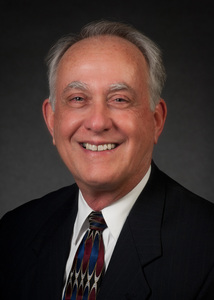Watch our industry-leading NDT roundtable, which covers the latest technology for the use of NDT with aerospace composites, or read an edited transcript of the online event below.
Now an established part of aircraft, manufacturers nevertheless require the best and most advanced NDT to verify that composite materials are defect free and capable of meeting the demands of a flight environment. Meanwhile, airlines and operators require ever-more efficient and effective tools and techniques to detect and analyse composites in aircraft structures.
Combined with continued innovations in manufacturing methods and the composite materials themselves, the challenges for engineers and technicians conducting NDT are numerous and evolving. However, these challenges are being met with the help of the latest NDT technologies and tools, such as x-ray and CT digital imaging, AI, machine learning, and robotics.
Discussion is focused on advancing NDT for the benefit of the whole testing community, sharing problems and solutions, technical knowledge and best management practices for attendees.
Presenters

Roger Engelbart
Retired from Boeing – ASNT Representative

Prof Robert A Smith
Chair of NDT Technical Committee and Past President – British Institute of NDT (BINDT)

Dave Seto
UTEX Scientific Instruments Inc – NDTMA representative

Ben Sampson
Editor, Aerospace Testing International
Q: What are the most common defects found in composites?
RE: For solid laminate composites, the most common are porosity, delaminations, voids and possibly disbonds. If there is honeycomb involved you are often looking for core defects, skin to core disbonds, crushed core and no-bond separations.
The hardest defect in that group to identify is the kissing disbond, a situation where the two surfaces are not joined, so there is not any strength, but they are actually close enough to each other to pass ultrasound tests. That’s very difficult to find.
The defect we spend the most time on is porosity. It drives the allowables for the material, the knockdown considerations. We spend a lot of time not just looking for porosity but also characterizing it. There is usually a maximum allowance of porosity over a certain area of a composite structure and it needs to be quantified. In preparation of manufacturing that will lead to porosity standards at varying percentages and ply thicknesses that can become costly.
Q: What changes in materials & manufacturing are impacting The NDT of composite parts?
Robert Smith (RS): The move to 3D-woven composites presents challenges. 2D-woven composites provide additional problems, but the move to 3D makes it difficult to distinguish the internal structure that should be there and any deviations from the design.
There is a move to out of autoclave manufacturing, resin-infusion processes where you haven’t got good, consolidated material at all stages within the process. Generally, the aim of all composites manufacturers is to not to have to do NDT. So the drive is to do the NDT and monitoring earlier, during pre-process and in-process. You are trying to find pre-cursors to defects. You are looking for changes in, for example, a dry fiber
pre-form before it gets cured that may ultimately result in a defect. That gives you an opportunity to rectify the defect.
Roger Engelbart (RE): As well as the materials developments Robert mentioned, there is a drive towards unitized composite structures – larger pieces and single part manufacturing – as opposed to lots of different parts and assemblies. The business case is that it reduces costs, hardware inventory and the weight of fasteners. But the size and the complexity changes the NDT operation. You need larger systems and more complex operational cells, Dave’s area of expertise. But you also have to consider defects and their locations, because with the size and the cost there is less interest in dealing with repairs and rejections and more interest in saving the structure.
Davae Seto (DS): Yes, for example when you have a forging using a powder metallurgy process, a piece can be worth millions of dollars. Manufacturers want to know before they start that the powder they are going to use is perfect and has no inclusions that will show up in an ultrasonic scan. Materials evaluation is key during that stage. By the time we put a forging into a tank of water it should be perfect – we are verifying that all of the preceding NDT and materials analysis has been done correctly. No one wants to see it scrapped and melted down.
Q: How can NDT engineers work with the structures & design disciplines to aid inspection?
RE: Very often, different departments like manufacturing, design, analysis and NDT are siloed. They have their separate roles. But there needs to be a collaborative interdisciplinary approach to a project and NDT should have a seat at the table from the start. A new aircraft program will begin with concepts and studies which will consider materials and NDT can provide input on costs, advantages and drawbacks to different approaches and help define things. We can also provide advice as the project progresses about what the structures community is thinking and what’s coming next, rather than finding out about it later.
Collaboration is important to the overall cost of the program and has to happen. The goal is always to not have to do NDT, so the more you account for up front, configuration geometry, access to critical areas, the more it will positively impact costs further down the line.
RS: NDT has a lot to offer during the design stage. There is a program in the UK about building more NDT into the design cycle to see if we can increase the confidence in virtual testing. The
aim is to replace as much of the experimental testing as possible with modelling and simulation.
A key challenge in that is that it is difficult to validate models, because the experimental tests have such a large distribution of results due to the composites themselves have a high amount of variability. If you test a hundred coupons, each one will be slightly different.
The potential is in using NDT to prove what you have actually made, instead of comparing it to what has been designed. It’s about improving the validation of the virtual testing to remove mechanical testing phases. To achieve that NDT has to be involved at the design stage and mechanical testing has to be instrumented with thermal stress analysis and digital image correlation, to know what is going on inside structures and parts.
DS: There is a robotic laser process for peening compressor blades for jet engines, which was thought to be better than surface peening initially, with more of a hardening throughout the blade. But the manufacturer was worried that they were hitting the titanium blade so hard with the laser that the shockwave might induce cracks in the cooling channels inside the blade.
We were involved in a project to design a robotic ultrasonic scanning tool to ensure the peening process had not induced any defects. Initially that was going to be part of the manufacturing process. But the engineers on the project figured out all they needed to prove was that the process is statistically reliable, because the laser itself is very reliable. So they only ever built two systems to prove that when they peen the blades they won’t have defects. The NDT was part of the design for the product and the manufacturing system, but now is only used to qualify new blades or parameters.
Q: How can we best train NDT technicians?
RS: In the UK we have a lot of technicians moving from metallic structures to composite structures and it is a totally different product. We have introduced a training program to help people switch. But there’s a lot of work to do. Also with Industry 4.0, with more automated analysis, continuous monitoring, machine learning and artificial intelligence, the whole workforce is potentially going to change its skillset. We will need more people who know about validating automated systems, instead of making the decisions themselves. But the people validating the systems need to know how to make the decisions themselves. There’s a lot to consider as manufacturing changes over the next decade.
RE: In terms of a pipeline coming in, good, experienced NDT practitioners are always in demand. But moving between industries and applications is difficult. Different industries have different materials, criteria and standards. This means companies need good on-the-job training internally, specific to their product line and requirements.
DS: We do a lot of automating processes for clients when they can’t get technicians, or where a human technician is inappropriate. But the value of the human isn’t dragging a probe around, but in the decision-making: do you know that the robot is holding the probe properly? Is the part illuminated enough? We always talk about how stupid machines are, but you always need a clever human controlling the machines. Companies who automate NDT processes need high caliber people for supervisory control that understand the physics, the specifications and standards.
But in the future, I agree NDT will need a collaborative approach. We will need material scientists, computer programmers and robotic and automation experts as well as the people who have a traditional NDT background to help interpret it all.




